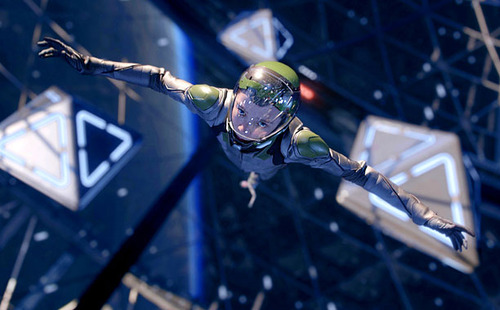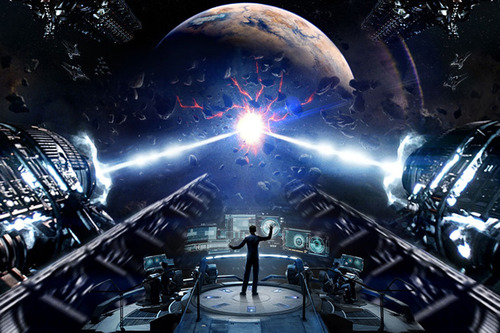If only Ender’s Game could have instead been adapted into a trilogy. There is too much morally and psychologically charged material in the original book to be transported into only one film.
Ender’s Game, written by Orson Scott Card in 1985, is the story of a genius boy – Ender Wiggin (Asa Butterfield) – who is handpicked to command all human forces against an army of bug-like aliens that had attacked the earth before. The International Fleet, led by the gruff Hyrum Graff (Harrison Ford) monitors Ender throughout his childhood before sending him to an elite battle school that teaches precocious children the art of war (children are chosen because they can approach battle more creatively and intuitively). Graff immediately singles Ender out as future leadership and forces him through a physically and emotionally grueling training regiment. Ender passes spectacularly by repeatedly proving his brilliance and toughness. I rather not spoil any more of the story from there.
The novel is psychologically intense and morally dark – especially when compared to comparable stories in the genre of teenage science fiction. Ender Wiggin is tortured by his ability to easily harm others and his inability to fit into the world. He realizes that his superiors are ruthlessly manipulating him, and being used as a tool for destruction confuses his sense of purpose and his sense of morality.
In the movie, Asa Butterfield does a great job imbuing Ender with a quiet intensity and a bizarre brand of confidence. Ender is purposeful, but still awkward and conflicted in his confrontations with two older boys, Stilson and Bonzo Madrid. But for the audience to really understand and relate to Ender’s turmoil, he would have needed a treatment similar to Natalie Portman’s Nina Sayers in “Black Swan.” Butterfield simply doesn’t have enough time. Even worse than his inability to resonate as a character is his inability to change in any gradual or believable way. His character arc (and the story as a whole) is rushed and ridiculous when put on screen.

Similarly, there was no time to appreciate the fantastic CGI effects. The “Mind Game” sequences, in which Ender is transported to a virtual reality visual game, were the most stunning and creative scenes in the film. The first game, in which Ender embodies a rat that must choose to dive into one of two bubbling cauldrons of green liquid, felt like Tim Burton’s “Wonderland,” only creepier. But these scenes couldn’t have been given more than five minutes of total time. Even the battle scenes –which were the narrative center of the novel – were so rushed that I could barely appreciate their dazzling visual creativity and simplicity.
Ender’s Game did not have time to grapple with its biggest questions: “what does it mean to be a child” and, even more importantly, “what does it mean to be human?” As a huge fan of the novel (in case that wasn’t already obvious), perhaps I am overestimating the failures of the movie. Regardless, Ender’s Game felt like a missed opportunity to be something much greater.

